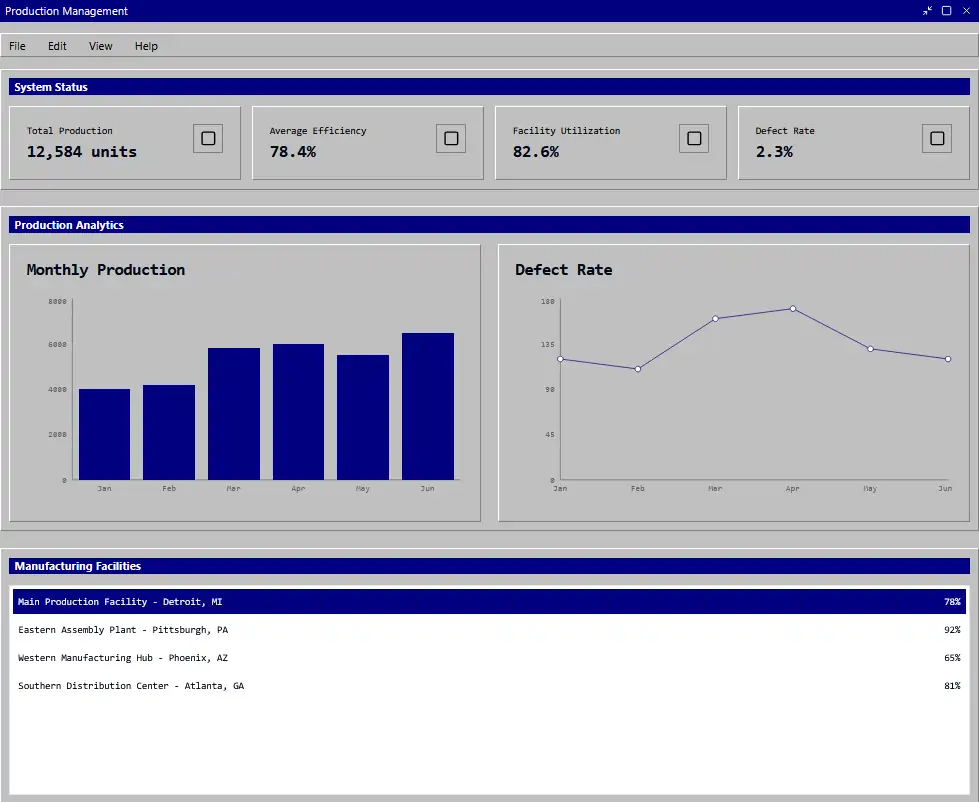Solutions
Software Reengineering
We specialize in software reengineering, transforming your legacy software systems into efficient, compatible, scalable, secure, and high-performance solutions with functionalities that align with your objectives.

Your experts for software reengineering
Reengineering Solutions
System Analysis
In-depth analysis of your current and future business needs, with particular attention to your existing software and its issues, leading to a comprehensive specification for your modernized software solution.
System Rebuild
State-of-the-art design and development of your modernized software solution based on defined requirements using modern technology stacks to ensure that your new software solution is future-proof.
System Analysis
Ideally, production systems should be kept running as long as they continue to meet expectations. However, there are situations where maintaining old systems is not economically viable. Modern solutions often significantly outperform legacy systems, resulting in higher opportunity costs. In addition, legacy software systems frequently encounter limitations or issues related to performance, scalability, security, compatibility, and functionality. At this stage, it becomes crucial to decide whether and how the old system should be replaced with a modernized, future-proof solution tailored to its specific use case.
-
 Services
ServicesOur reengineering services begin with a system analysis. This includes a thorough understanding of your current business needs and specific use case. We help you define requirements that align with your goals for your new solution. We also analyze your existing software to identify features to carry over to the new software.

Business & Requirements Analysis: We conduct a thorough business analysis to determine your real business needs. Subsequently, we carry out a requirements analysis to collect and analyze existing product requirements in order to have a common understanding of the product to be developed.
Legacy Software Analysis: We analyze your legacy software in terms of the features that are to be carried over to the modernized version. In doing so, we examine any existing source code and its documentation, as well as manuals and other information that may be useful. Then, we formulate requirements for usability and functionality that are to be carried over. Finally, we submit to you our recommendation, whether to modernize parts of your existing software, e.g., by creating automation, to rebuild the software system similarly, or to develop a new system from the ground up.
Requirements Specification: We help you create a detailed Customer Requirements Specification (CRS) to define your view of the expected solution as a synthesis of your current goal and features to be carried over from your legacy system. A clear specification streamlines development and ensures high product quality. While the requirements specified at the outset are not a substitute for agile development, but rather a guiding star for effective and efficient solutions, some or all of them can be declared mandatory requirements if needed. In such a situation, defining binding requirements that must not change during the course of the project provides a solid foundation for the forthcoming development, reducing uncertainty, effort, and cost.
System Rebuild
We are committed to providing efficient solutions tailored to our clients’ needs, avoiding unnecessary overhead or over-engineering. While custom-built systems are often the optimal approach, in some cases, it is more efficient to apply an existing generic solution with some customization. In addition, sometimes rebuilding only a part of the legacy system is sufficient. In all other cases, we offer comprehensive development services to deliver the solution you need, whether it’s a facelift or completely new software built from the ground up.
-
 Services
ServicesBased on defined requirements, we design and develop your modernized software solution, providing apps, backend systems, and automation according to our robust development process. In any case, you get a system that aligns with your objectives.
Apps: We modernize your apps, transforming legacy software into modern, future-proof solutions that align with your goals. We reengineer no-/low-code, native, and common tech stack apps.
Backend Systems: We modernize your backend systems, transforming legacy software into modern, future-proof solutions that align with your goals. We reengineer no-/low-code, native, and common tech stack backend systems. We also focus on choosing the best deployment for your use case, which sometimes means moving from the cloud to a self-hosted solution or vice versa.
Automation: We modernize your existing systems by implementing powerful automation, transforming legacy software into modern, future-proof solutions that align with your goals. Depending on the requirements, automation can be an addition to the system or a complete replacement.
Have a project idea in mind?
Let’s find out how we can help you turn your vision into reality!
Frequently Asked Questions (FAQ)
When should reengineering of legacy software be considered?
Legacy reengineering is appropriate when software is running on outdated platforms or operating systems that have reached the end of their life cycle, making support and updates difficult and costly. Performance issues such as poor efficiency, scalability challenges, security vulnerabilities, and compatibility problems also necessitate reengineering. In particular, scaling no-/low-code applications can be a challenge, combined with potential vendor lock-in, that might lead to reengineering as a solution. Integration challenges with new technologies, devices, applications, or third-party systems can be resolved with modernized solutions, improving overall compatibility. In addition, if the system has functional limitations and cannot be adapted to meet evolving business needs, reengineering can add new capabilities and improve overall functionality.
Are there any downsides to reengineered software?
Typically, reengineered software represents a significant improvement over legacy systems by retaining necessary functionality, adding new functionality, and removing obsolete elements. However, the reengineering process can be complex and require significant effort, depending on the scope of the legacy software being modernized. Reengineering-specific features can be challenging when no source code or documentation is available for the existing software, requiring the creation of a completely new specification for existing features, often through reverse engineering. Despite these challenges, the benefits of a modern solution that incorporates all or part of the functionality of the legacy software generally outweigh the difficulties associated with reengineering.
Can software be reengineered without source code or documentation?
In most cases, the availability of source code or some form of documentation, such as interface specifications, allows for the recreation of most functionalities quite effectively. However, when source code or specifications are missing, reverse engineering becomes the only viable method to understand the existing software. This process is significantly more labor-intensive and, in rare cases, may not be successful, especially if the binaries are protected with encryption or obfuscation, making disassembly or decompiling difficult. Another approach is to monitor the software in its live environment, capturing data streams and events to deduce its functionality. To ensure a smoother reengineering process, it is advisable to have source code or comprehensive documentation/specifications available.

